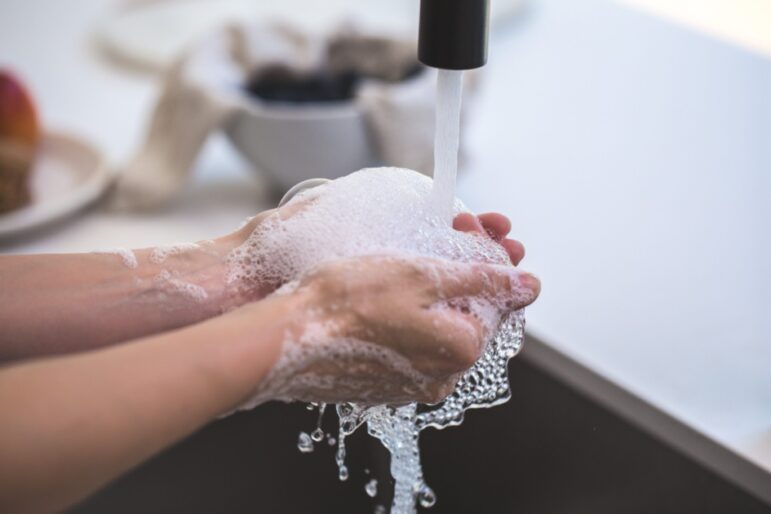As the public returns to a pre-COVID lifestyle, filling up common spaces, more and more hospitality facilities are following suit. Hotels and motels, restaurants, and grocery stores are relaxing their enhanced cleaning protocols and spaces are filling up again. However, COVID-19 is still present, along with norovirus and aggressive flu seasons, so it’s just as important as ever to maintain indoor spaces that are clean, healthy, and safe.
A fresh take on indoor air
Did you know that air pollutants are two to five times higher indoors? One of the most common sources of indoor air pollutants is humans themselves as they release bacteria and viruses into the air. That can be a significant issue in a restaurant packed with guests and staff. If ventilation is inadequate in crowded areas, the risk of infection from these pathogens is high.
Fortunately, advancements in cleaning technology continue to be introduced. The latest development is air purification systems that work to clean the air of pollutants, with some machines capable of continually removing up to 99.998 per cent of airborne pathogens.
RELATED: The importance of air purification
Introducing an air purification system is actually quite simple. It starts with an assessment of the size of the space and how many air changes are needed every hour, based on peak traffic periods and the air purifier’s filtering abilities. That determines the number of air purifying units required and optimal placement within the space. Once the units are set in place they take care of the rest, continually expelling clean, sanitized air!
All-in on hand hygiene
Despite the hyper-vigilance around hand hygiene during COVID-19, old habits die hard. Historically, it’s been challenging to get people to practice proper hand hygiene. A study conducted by the Journal of Environmental Health found that of 3,749 participants, only 66.9 per cent washed their hands with soap and 10.3 per cent didn’t wash at all. From those 66.9 per cent of soap users, only 5.3 per cent spent more than 15 seconds washing in total. For facility owners, especially those who see a lot of traffic, this is concerning.
Keeping all washrooms fully stocked with hand soap is the place to start. Consider placing hand washing posters next to every sink in the washroom to encourage people to not only wash their hands but to do so properly and for the correct period of time. But it doesn’t stop there.
Providing guests with the appropriate products to dry their hands is essential. Although an air hand dryer might be an attractive purchase to make for your washrooms, multiple studies have proven that paper towels can reduce bacteria on the hands by 77 per cent while air dryers actually increased the amount of bacteria on hands and in the air. Since 69 per cent of participants in a handwashing survey preferred paper towels over air dryers in washrooms, a paper towel dispenser is not only a great investment in facility hygiene but also for the customer experience.
In hospitality spaces like restaurants, hotels and motels, and grocery stores, there are many high-touch surfaces from condiment bottles to door handles and shopping carts. Make access to hand sanitizer, with an alcohol percentage of 60 per cent or more, readily available in all areas of your facility. Placing a dispenser next to or before high-touch and high-traffic areas can increase their use and promote better hand hygiene.
Making the grade
Participating in clean building certifications is becoming a popular practice to ensure a certain level of cleanliness and best practices are maintained at all times. The Cleaning Industry Management Standard (CIMS) and the Global Biorisk Advisory Council (GBAC) Star certifications can define the standard of cleanliness in any facility.
Digital cleaning management systems can help facilitate efficient and effective cleaning programs that meet CIMS regulations and help you achieve your cleanliness goals, and many leading systems such as WandaNEXTTM are equipped with key features to track, verify, and validate facility cleanliness and designed to make it easy to streamline cleaning operations, improve efficiency, and save time and money.
Whether you manage an essential or leisure facility, a hotel/motel, a grocery store, or a restaurant, tracking your process allows staff to respond to all the facility’s cleaning needs, and aids in keeping your spaces clean, safe, and healthy.
David L. Smith is the Cleaning, Hygiene & Sanitation Director at Bunzl Cleaning & Hygiene, Canada’s largest specialist distributor of cleaning and hygiene products and equipment. For more information or to book a comprehensive Facility Assessment please contact david.smith@bunzlch.ca.








